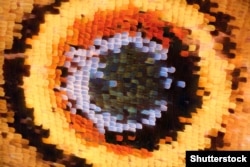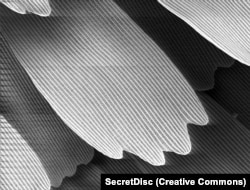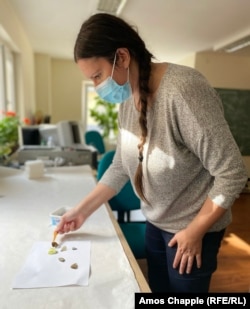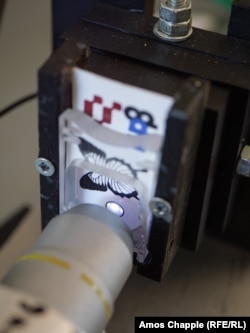At a press conference in Germany in 2014, a news photographer snapped several close-up images of the country’s then defense minister, Ursula von der Leyen, as she spoke to reporters. Soon afterward, a hacker called “starbug” downloaded the high-resolution photos, zoomed in on von der Leyen’s hands, then made a replica fingerprint precise enough to potentially open digital devices, such as the defense minister’s smartphone.
Marija Mitrovic Dankulov, a scientist at the Institute of Physics Belgrade, tells the "starbug" story to highlight the weakness of modern security systems, including fingerprints, QR codes, and electronic passes. “There is currently no security label that is uncopyable,” Dankulov says. But the physicist and her colleagues have found a key in nature that they believe no hacker can unlock.
Butterfly wings are covered in as many as 200,000 tiny scales, arranged like overlapping roof tiles. Anyone who has touched a butterfly or moth will have seen these scales as the “dust” that rubs off onto fingertips or clothing.
While researching the scales through an extremely powerful electron microscope, Dankulov’s colleague Dejan Pantelic made a realization: Within each tiny scale is a lattice, a kind of mesh structure, that is as unique as a fingerprint.
In 2015, the idea of what the Serbian team of physicists, including Dankulov and her colleagues Pantelic, Dimitrije Stepanenko, and Nenad Vukmirovic, call “Teslagrams” was born. The prototype security system is named after the great ethnic Serb inventor Nikola Tesla.
The concept, Dankulov explains, is to attach a butterfly scale to an object and then enter the exact visual details of the scale into a database to ensure an item is not a fraudulent copy.
“Let's say a museum wants to loan a very valuable art piece out to some gallery," Dankulov says, “Currently, when that artwork is returned, the museum has to pay some specialist to ensure that what they got back was the original artwork.”
If that art had a butterfly scale affixed somewhere onto its surface, the museum would instead be able to use a “reader” to check that the butterfly scale matches the listing in the database for that artwork. The natural “barcodes” are so tiny and fragile that tampering with them would do visible damage. And because the scales are three-dimensional, copying one is impossible.
The museum scenario sounds like something from the future because it is. Today the “readers” of the Teslagrams -- small but powerful optical microscopes -- are still in the development stages, and the Belgrade scientists have several engineering obstacles to overcome, such as how to affix the scales to objects like artwork in a way that could be easily read and not subject to damage.
But the Belgrade scientists have received patents for the Teslagram technology, and Serbian company Vlatacom, which has recently become involved in the development of the unusual technology, is currently trialing Teslagrams on electronic pass cards used by its staff. Relatively recent technology makes electronic key cards, like those frequently used by employees, easy to copy. The butterfly scales enable the company’s access cards to be checked against a database if there is any suspicion of fraud.
Butterflies are in plentiful supply in Serbia, and virtually any species -- including those considered pests, such as the white cabbage butterfly -- is suitable for use in Teslagrams. The Belgrade scientists capture or buy the fluttering insects, which are held with food and water until their life cycle is complete and they die naturally -- usually within a few days. Then work begins on extracting their scales using a secret process that ends with the tiny flakes of chitin suspended in an alcohol solution.
Dankulov believes the first adopter of the technology is most likely to be the high-end fashion and luxury-goods industry, which is fighting a losing battle with a widespread gray market in counterfeit products. If Teslagrams were adopted by a fashion house, labels with butterfly scales attached could be checked against an open database. The tiny natural markers could also make resales of luxury items easier. “Typically, for instance if you buy a very expensive watch,” says the physicist, “if you want to sell it in the future, you need to hold onto a certain kind of certificate of authenticity. But what if you don't need these kinds of things? What if someone can actually check a Teslagram label on the watch?”
The Serbian team has watched closely as the latest model of iPhone announced a macro lens feature that allows for extreme close-up photographs. If that development is taken further and smartphones are eventually fitted with microscopes, Dankulov says there would be no need for a specialized “reader” to check Teslagrams. This would enable even cheap goods such as medicines to be marked with Teslagrams and easily checked by consumers for authenticity, a development that she says “has the potential to change the entire world’s security industry.”








